Mobbing a Harris Hawk
I’ve got a day off in Rome and have spent the morning in Parco della Caffarella. There’s not much wildlife around and it’s getting hot. It’s time for me to meet up with the Puffin Whisperer for lunch. Pasta is calling me.
As I walk up the hill in the direction of the Metro I see a huge bird of prey on a bare branch.
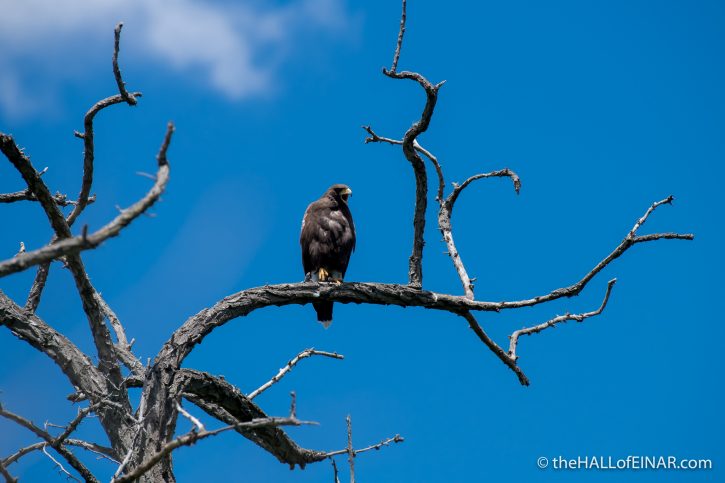
It’s a Poiana di Harris; a Harris Hawk. I believe there are a few which live here, all escaped birds, once used and abused for falconry.
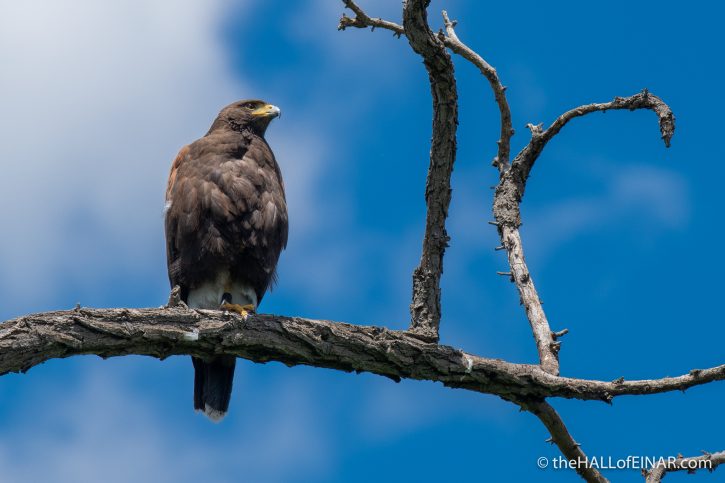
It’s a beautiful bird. I’m hoping I can get close to it without making it fly.
It certainly has attitude.
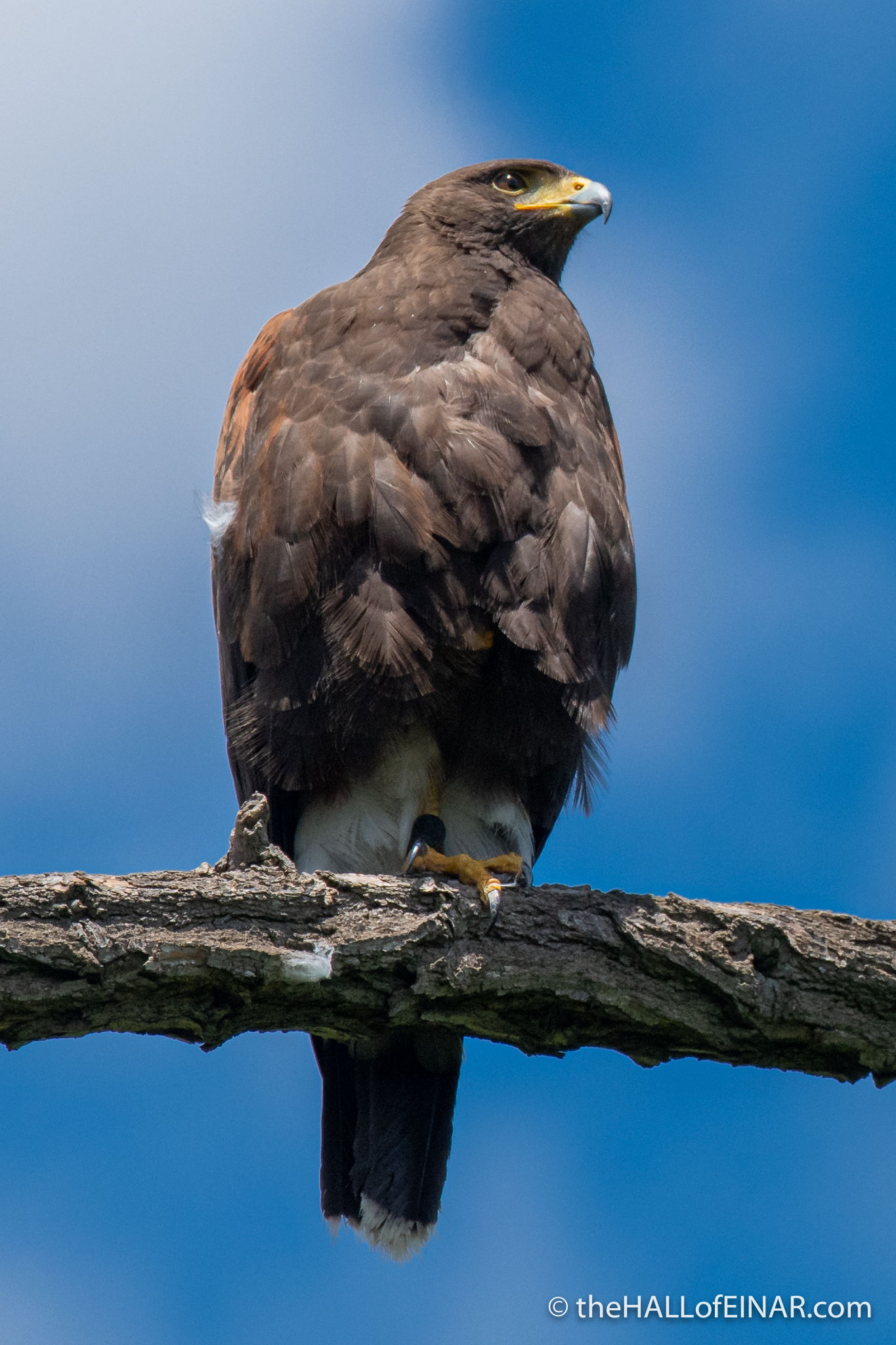
I needn’t have worried. It doesn’t look as if it’s going to fly anywhere on my account. It’s totally unconcerned by my presence.
I do a quick search and find Harris Hawks are from the south-west USA and South America. They don’t migrate and can be social and hunt together. They are often used by falconers because they are easy to ‘train’. Harris Hawks are the birds used to clear the pigeons from Trafalgar Square or clear the pigeons off the tennis courts at Wimbledon.
It was probably Harris Hawks used by Southern Water on the beach at Worthing on the south coast of England this month. Here’s what the BBC report says about it:
Southern Water said it had evidence bird mess was affecting water quality along Worthing’s beach on the West Sussex coast. Gull poo contains more bacteria than human or dog faeces,” a spokesman for the water company said.
What a classic diversionary tactic: ignore your own pollution; minimise the effect; compare it to something else you say is worse; take ineffectual action.
Tana Jackson said the seabirds appeared to be “extremely distressed” and called the scheme “ridiculous”.
Ridiculous indeed.
Southern Water said hawks were being used as a “visual deterrent” as part of a trial. “We hope to continue this vital work later this month at Worthing and other beaches,” the company added.
Vital work? It’s hard to believe that any company would be so ignorant. It’s like trying to stop bears doing what they do in the woods. What will Southern Water do next? Add chlorine to the sea? It’s not ‘bathing water’, it’s the sea. It’s interesting to compare their attempts to stop gulls defecating in the sea with their failed attempts to stop waste water being discharged into rivers, streams and the sea:
Southern Water has been hit with a record £126m punishment for spills of wastewater into the environment from its sewage plants and for deliberately misreporting its performance.
They’ve not just been polluting, but also lying.
Southern Water’s largest shareholders are JP Morgan Asset Management (40%), UBS Asset Management (22%), Hermes Infrastructure Funds (21%) and Whitehelm Capital (8%). Southern Water’s former chief executive Matthew Wright was paid more than £5m by the company between 2011 and 2016 when the pollution occurred. That’s capitalism for you. Or should I say crapitalism.
What’s to blame for poor water quality? Not investing in vital public infrastructure so you protect returns to your institutional shareholders leading to multiple incidents of leaking sewage onto beaches? Paying your Chief Executive millions while lying about the extent of your pollution? No, it’s the fault of gulls, apparently.
My mind is back in the park and the plight of this Hawk:

I can see the leather jesses on its feet. I understand why people would want to get close to these magnificent hawks. They are awesome beasts.
I used to love the idea of falconry until I read H is for Hawk by Helen Macdonald. I suspect it’s a memoir which will lead to an increase in falconry in the UK. I really admired her autobiographical story and loved the chronicling of her growth and development over the course the book. It’s just that I found her treatment of the goshawk in it so incredibly cruel that I couldn’t stand to read it in parts.
The book won the 2014 Samuel Johnson Prize and Costa Book Award. It was a number one best seller. It’s viewed as a modern classic of nature writing. I found it beautifully written and utterly sadistic. If you’re struggling to come to terms with grief after the loss of your father, then do something better with your life than engaging in inhuman and degrading treatment of a wild animal. Don’t tether and terrorise it to make yourself feel better. Please.
There are 95 bird of prey zoos in the UK. They have at least 4,252 birds from 170 different species. There are owls and eagles and falcons and buzzards and vultures. Many of them spend all day tied down, unable to fly, stuck to a post on a lawn. They have no chance of interacting, mating or feeding naturally and often only fly for 10 minutes a day. Isn’t that just incredibly abusive?
I’m close to the Hawk now. I’m glad it’s escaped.
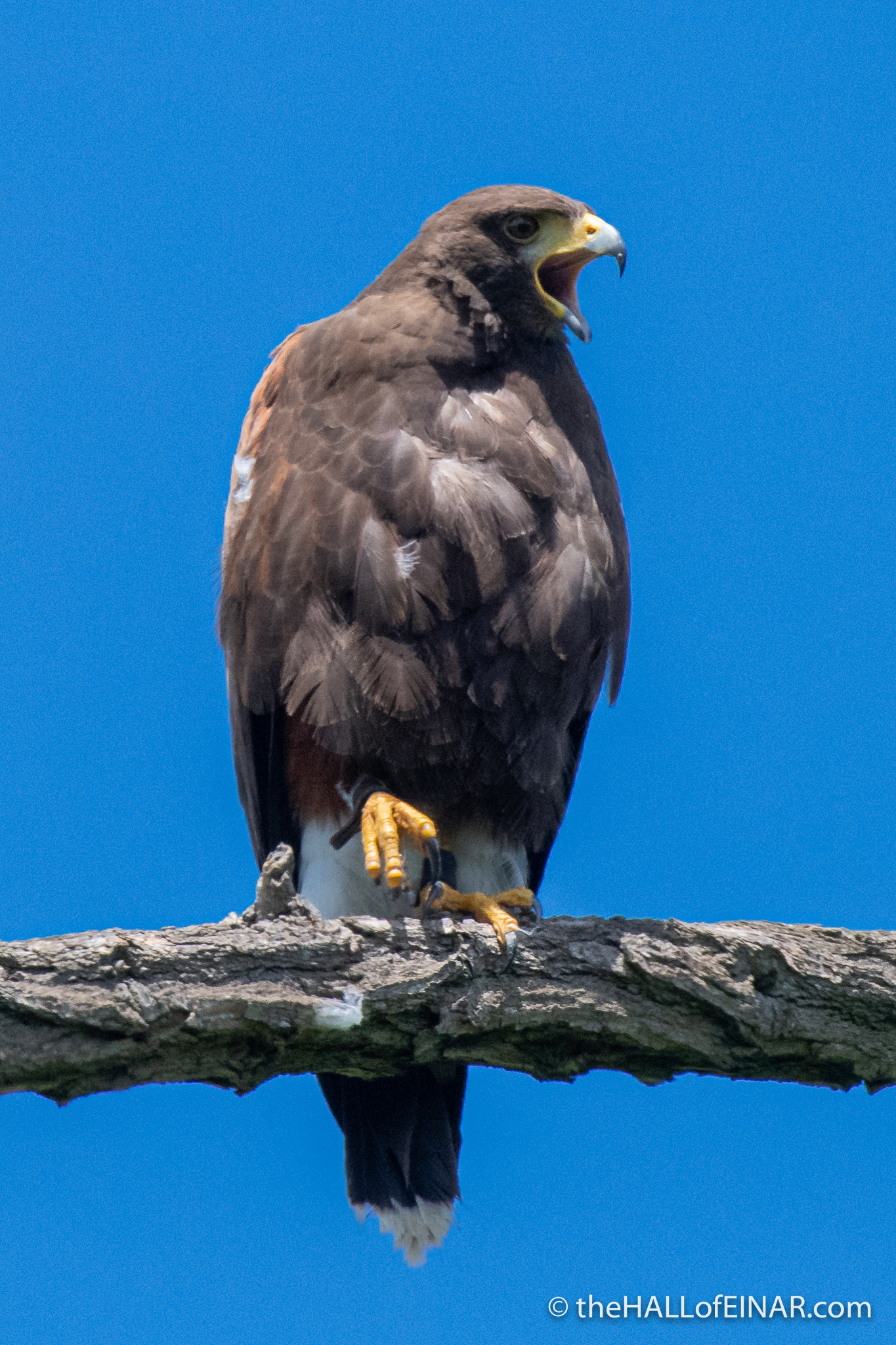
I’m sure it is, too.
There’s a Hooded Crow waiting in the wings. It’s about to mob the Hawk. Hooded Crows also have attitude. In fact, they have so much attitude that it only takes one of them to form a mob.
It pounces:

The Crow is tiny in comparison to the Hawk but its persistence pays off:
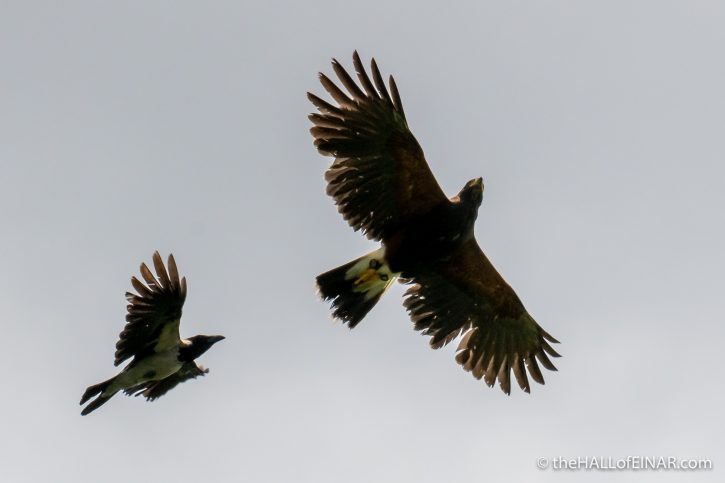
This Hawk has a scrappy tail:
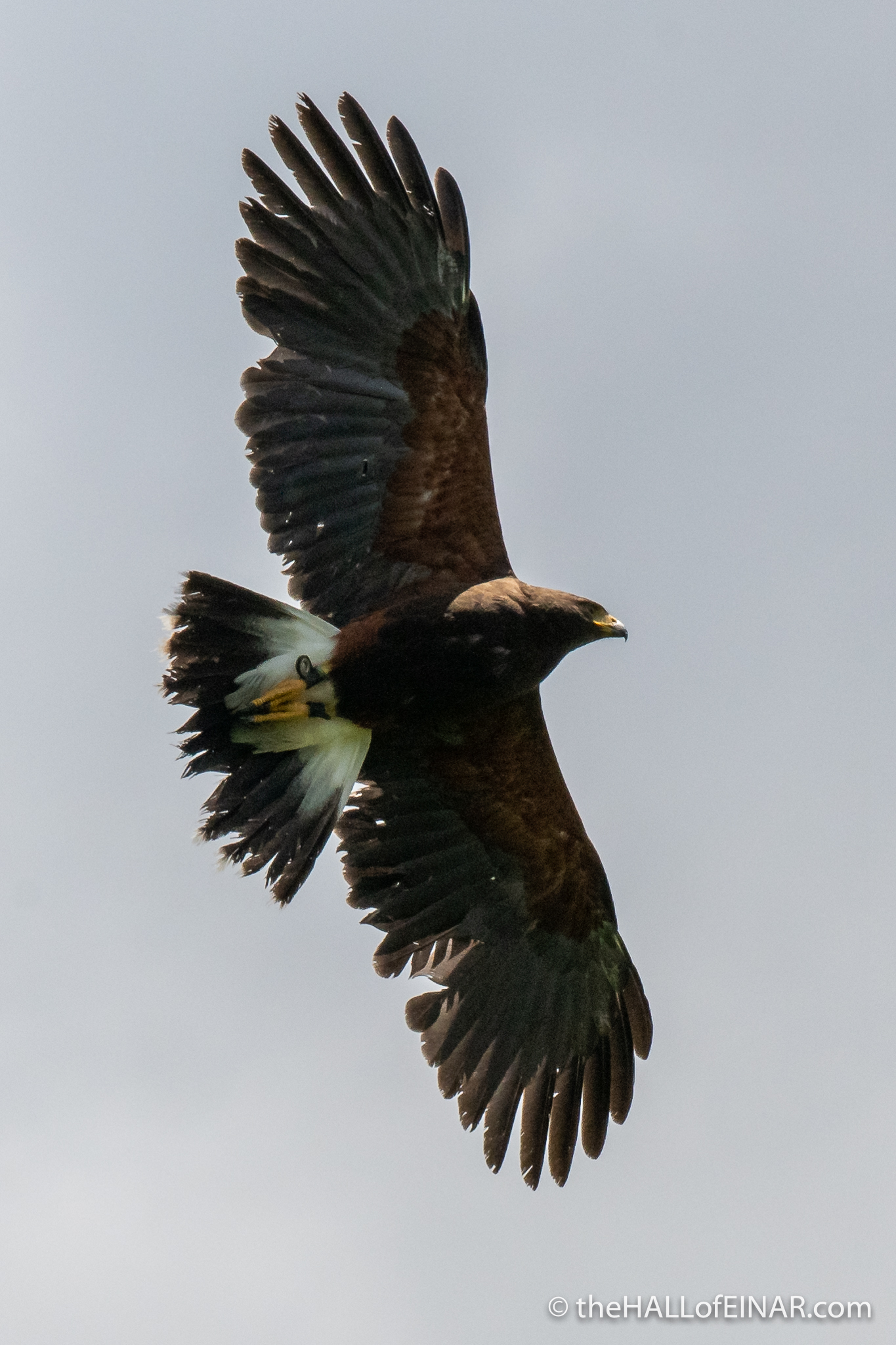
In America there are Cottontails for it to eat. I suspect it manages to catch some of the escaped domestic Rabbits which fill the edges of the bramble patches here in their nibbling hordes.

I wonder if this parkland is a vision of the future? Most native species killed; no top predators; trees chopped down and replaced with ornamental introduced species; escaped pets filling the voids left; walkers with horribly inbred dogs; people left bereft, living in wildlife poverty.
What will we do to sustain ourselves when the whole world is a garden, a park, a golf course, a driven grouse moor or an industrial farming landscape, and everything is controlled and sanitised?
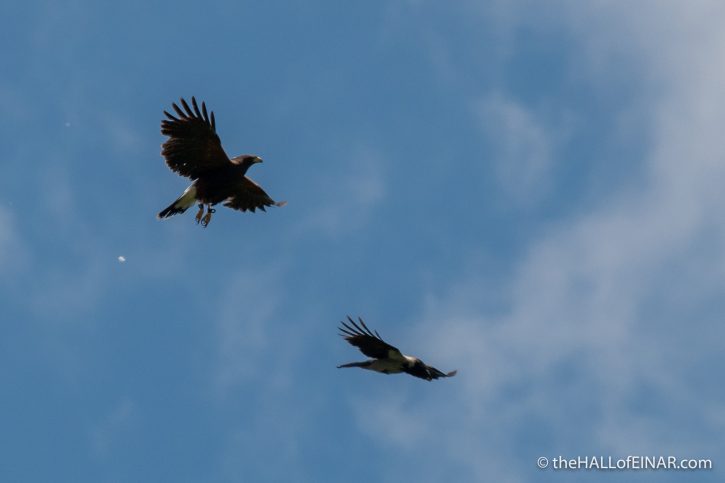
Then another Hooded Crow joins in the abuse, followed by a Yellow-Legged Gull:
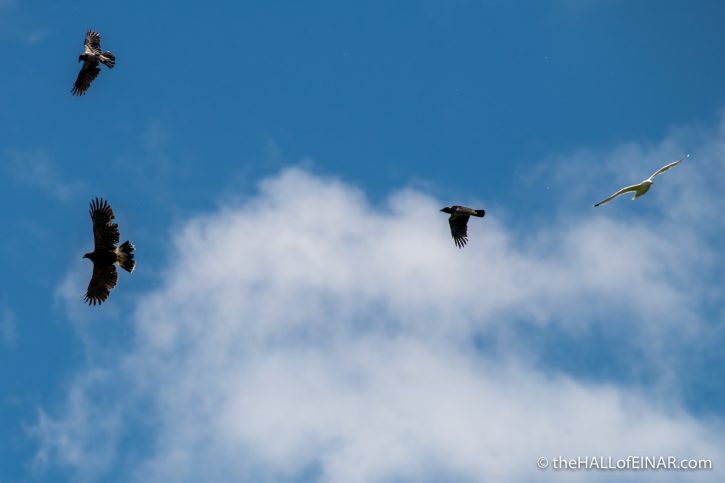
As the Hawk wheels away the Yellow-Legged Gull shouts abuse from above. Or is it below? I’m not sure of the size difference between them.

It can’t be easy being such a large target of hate for so much of the wildlife here. I wonder what its life would be like in South America? Don’t you?


